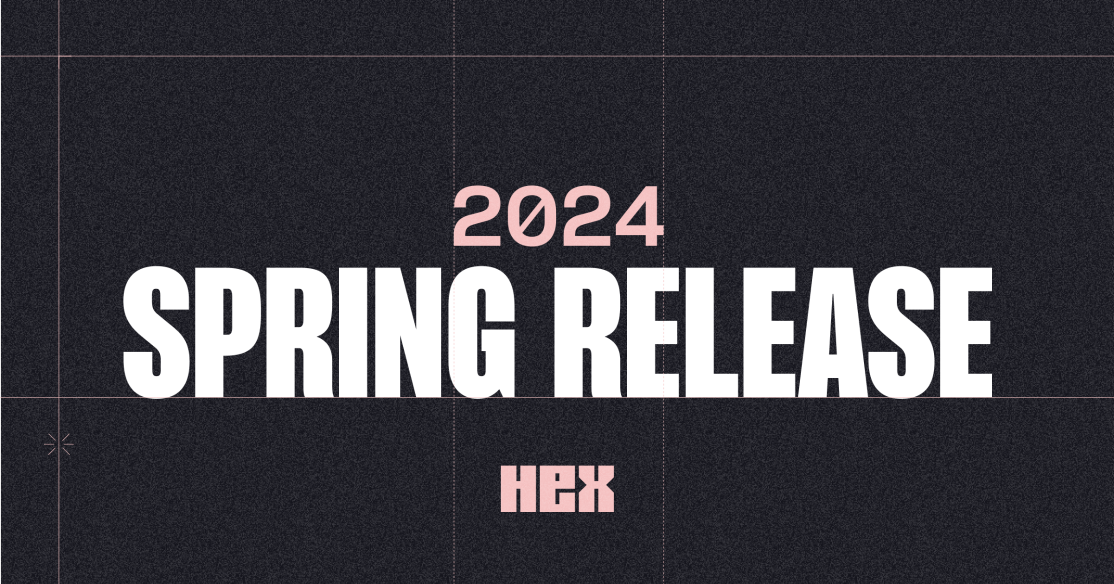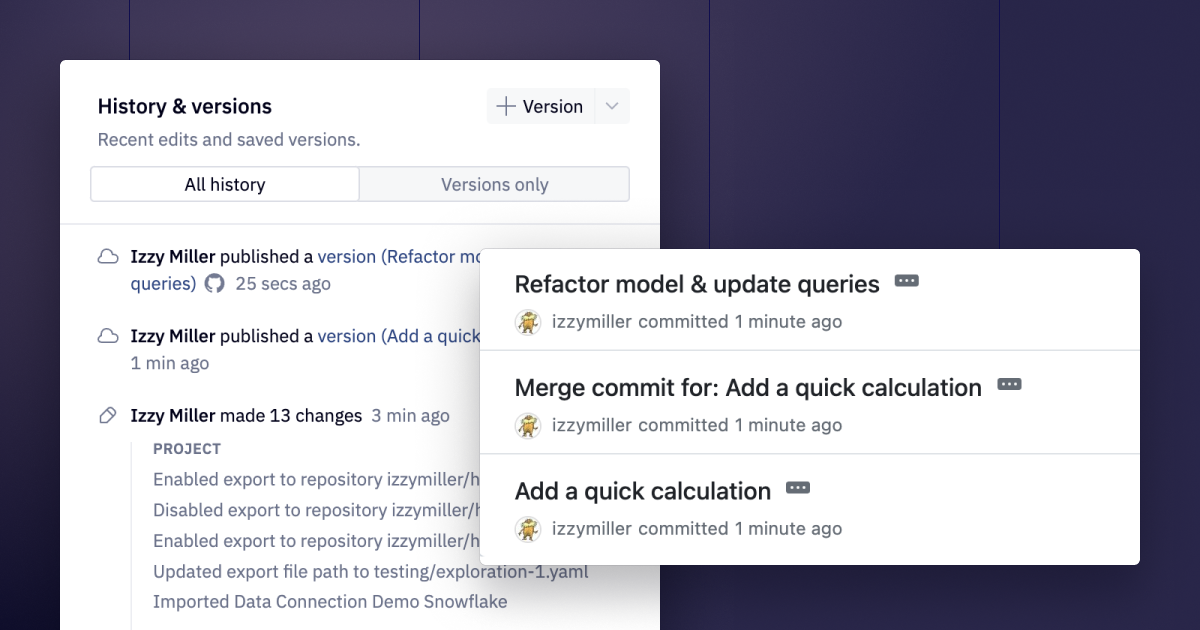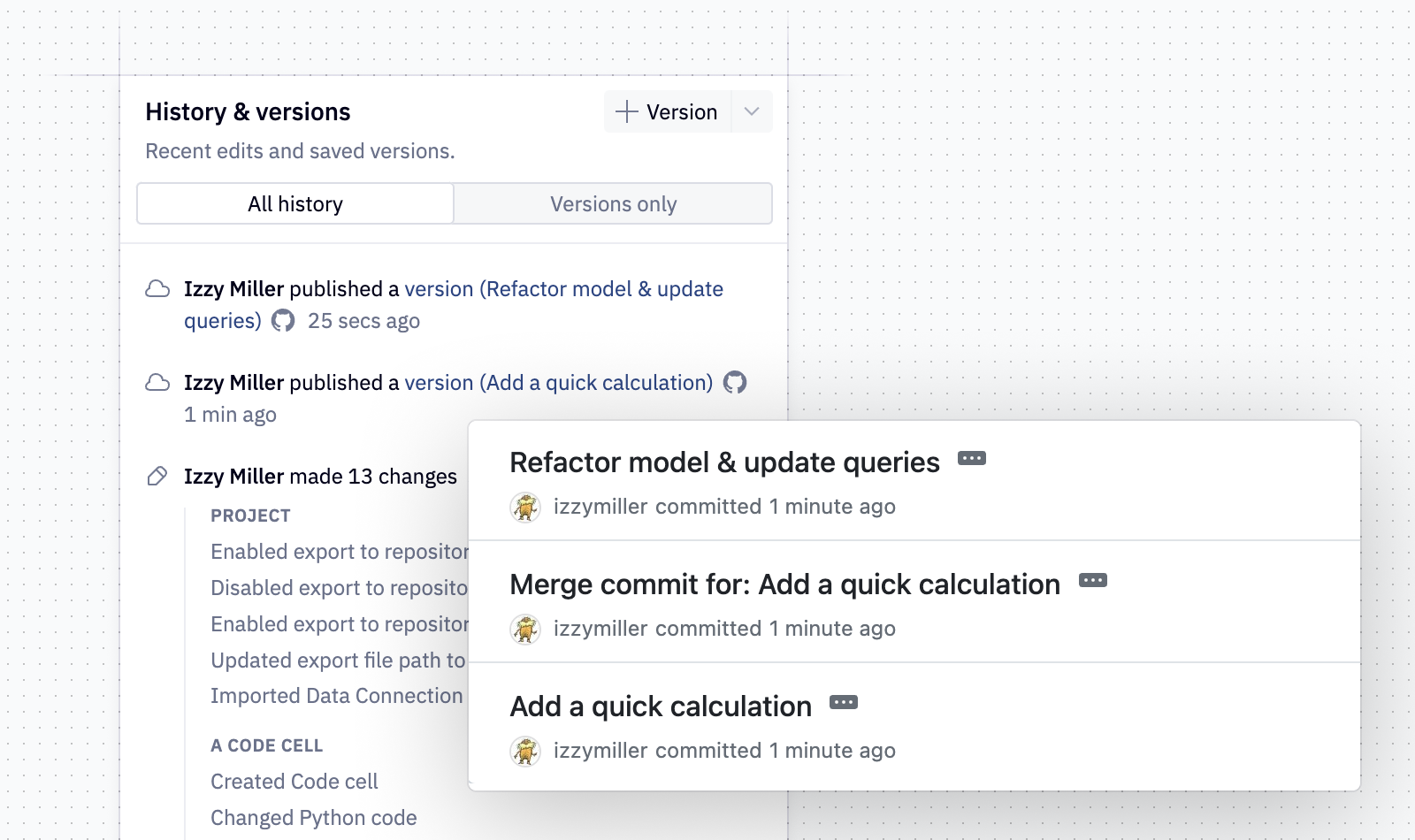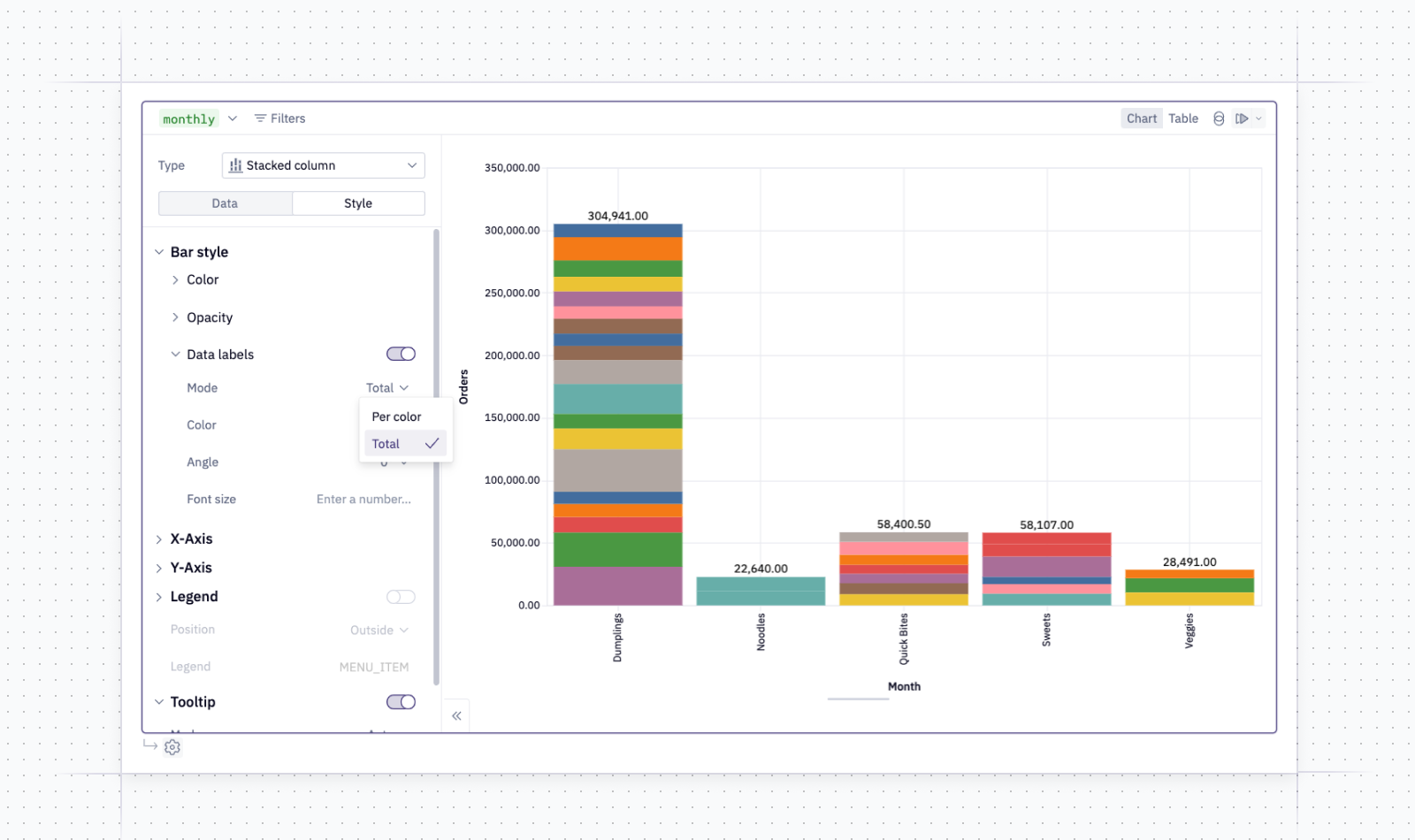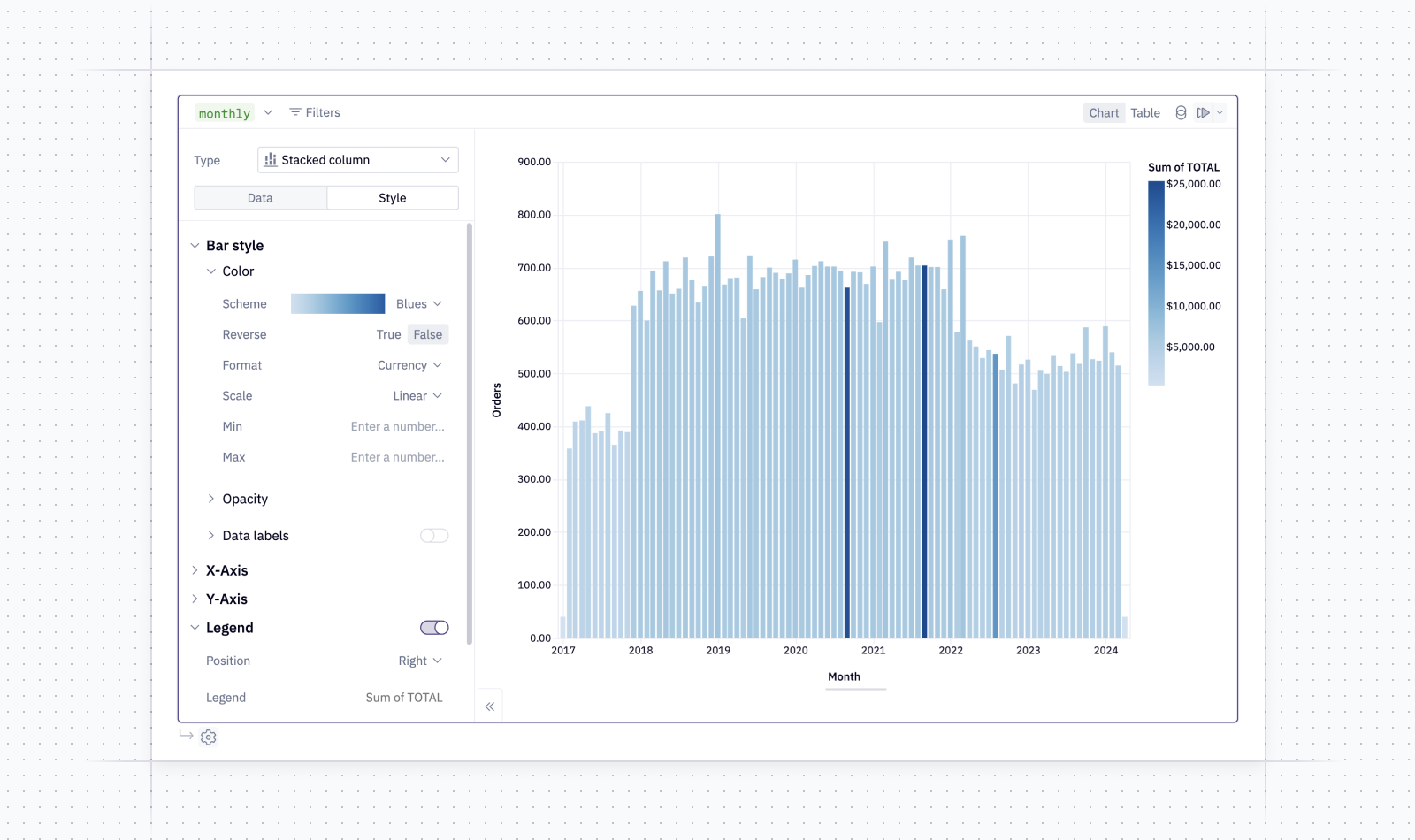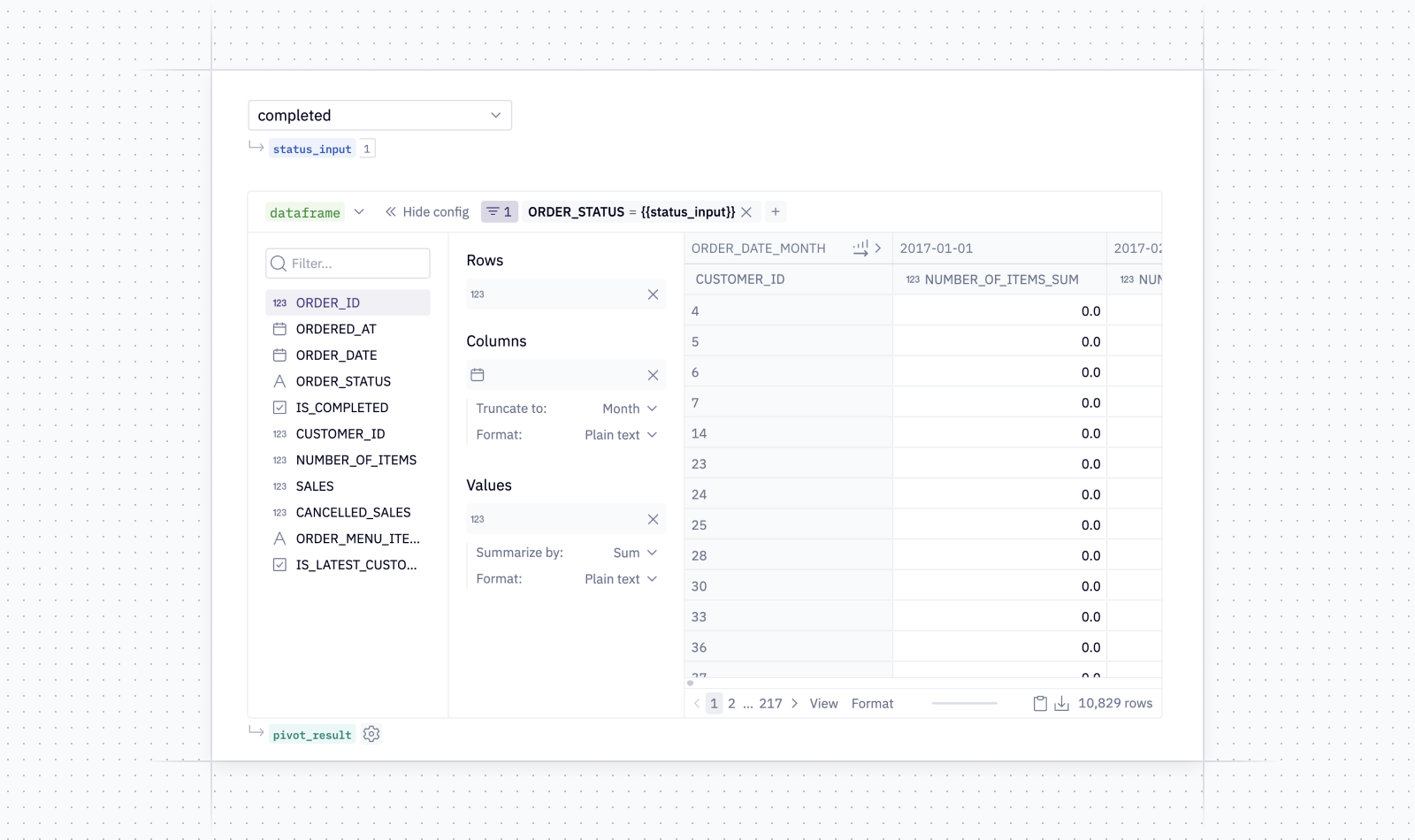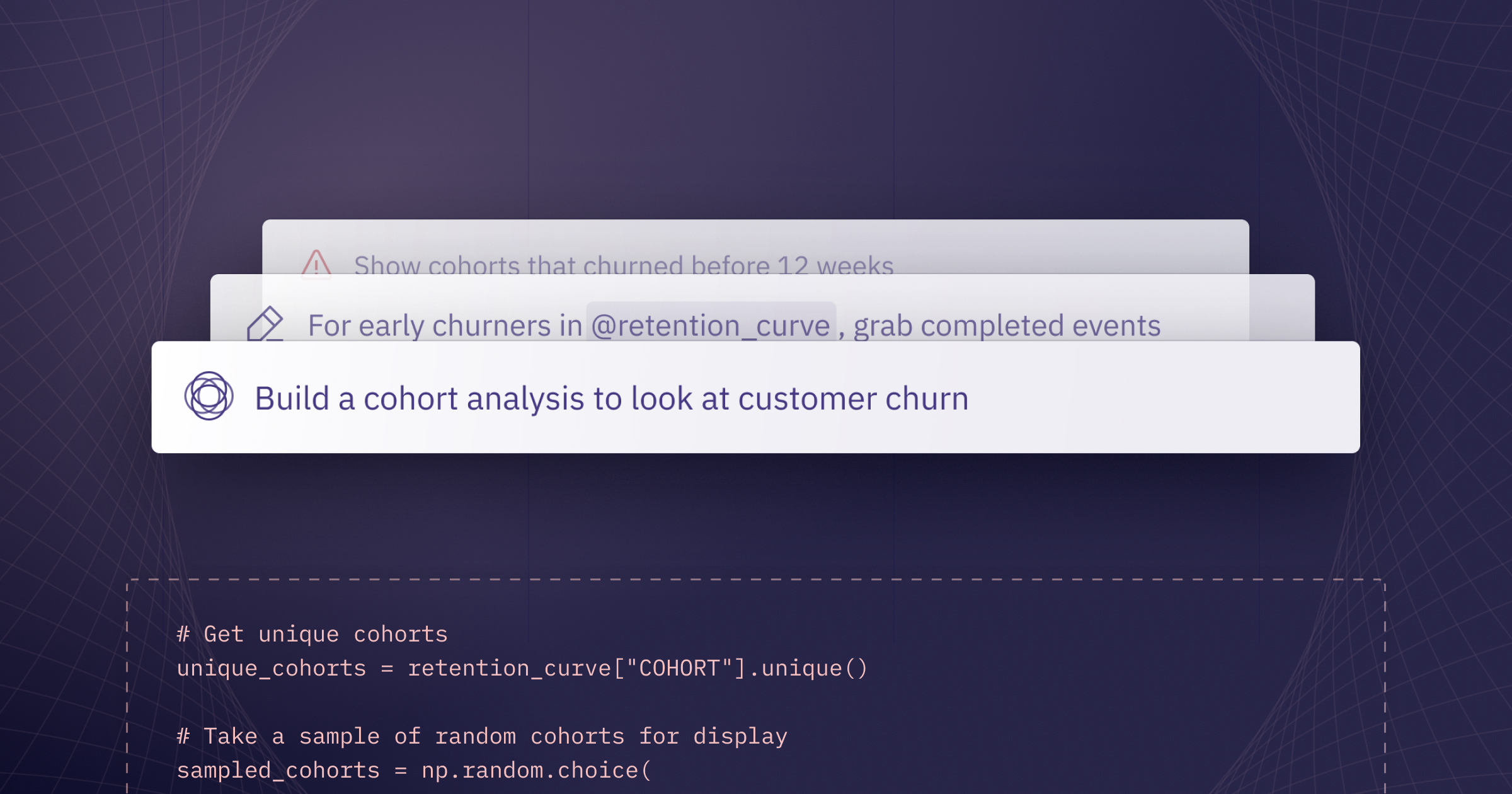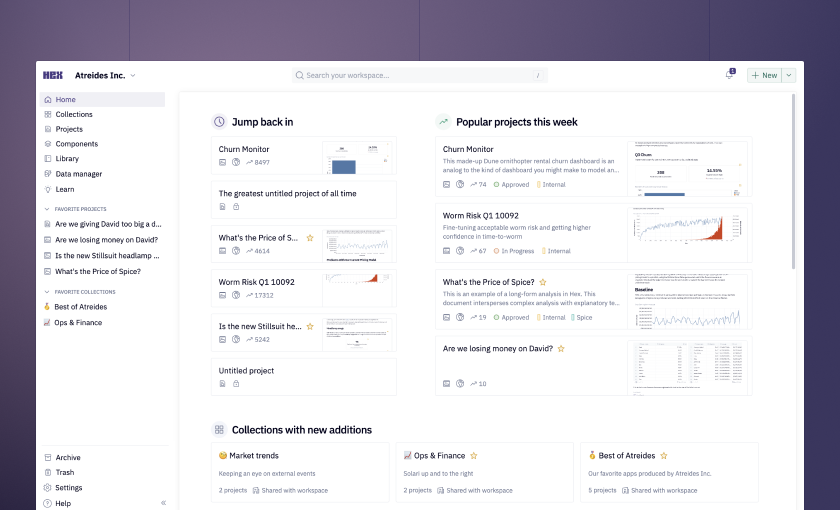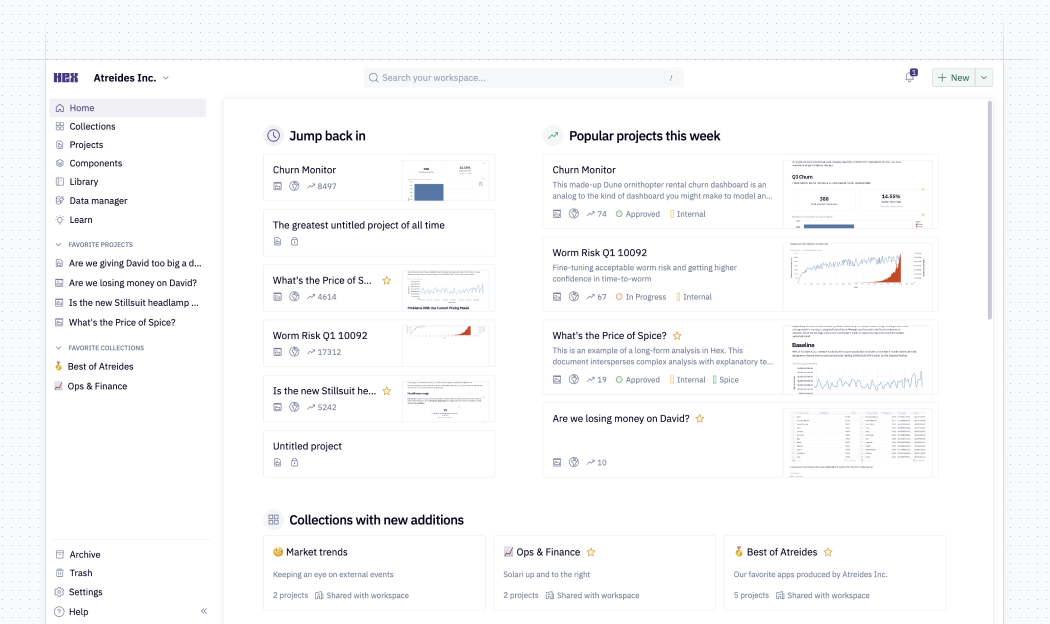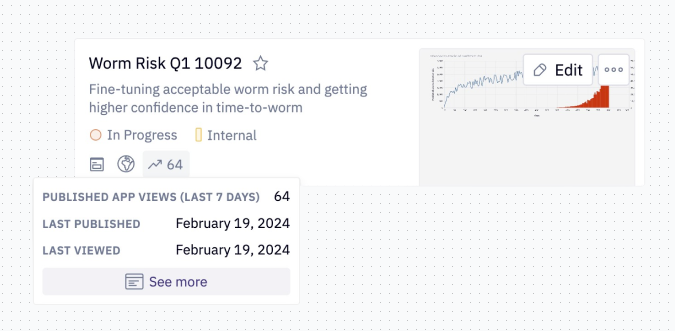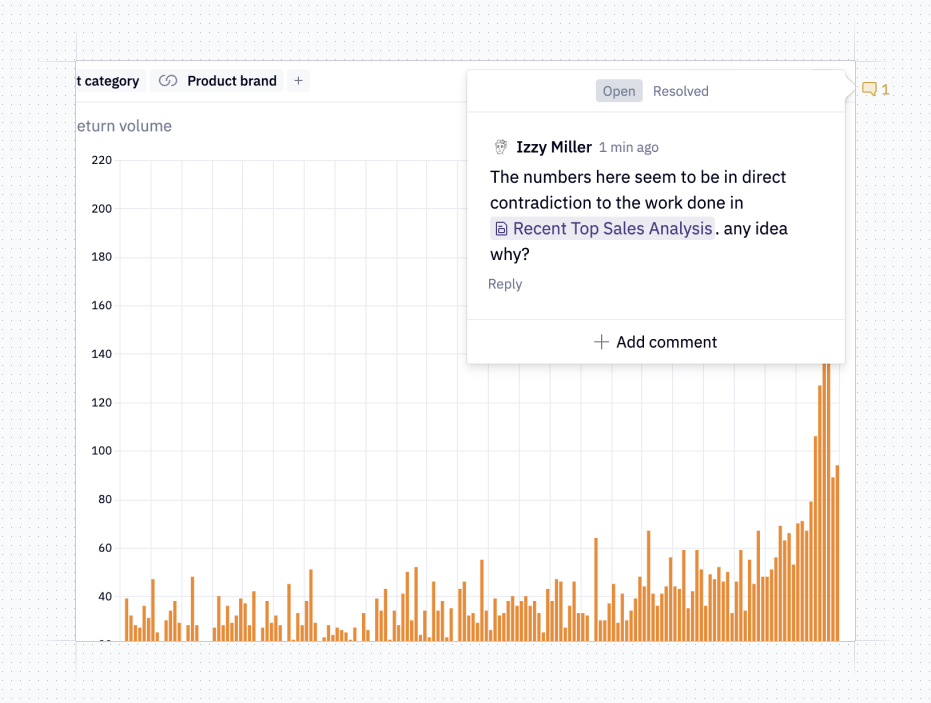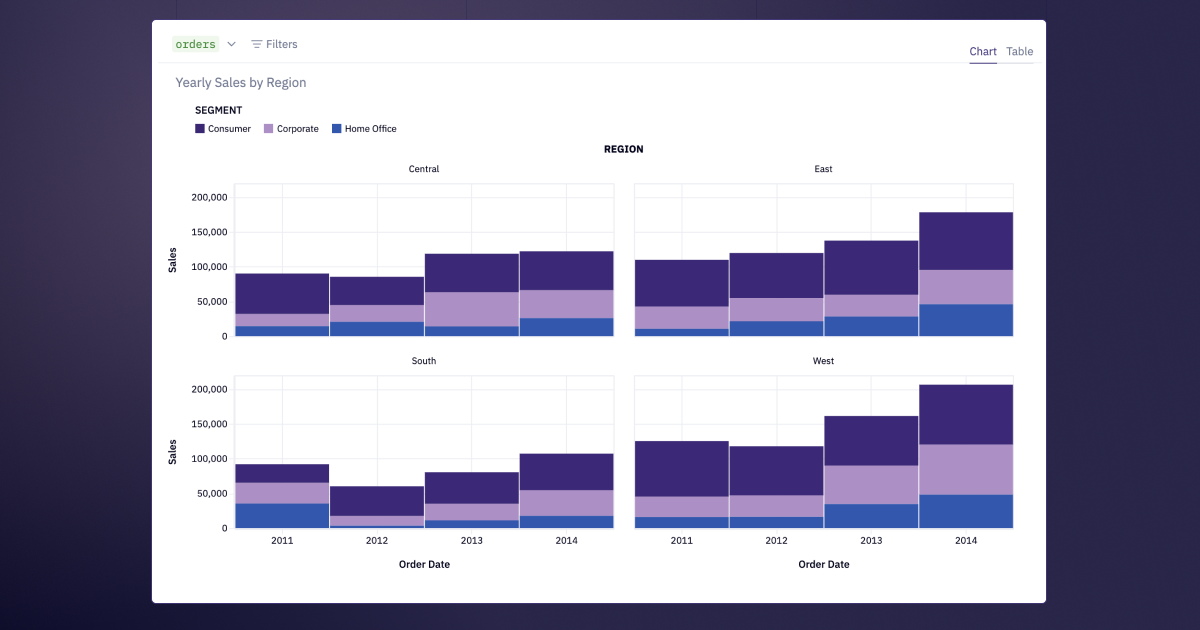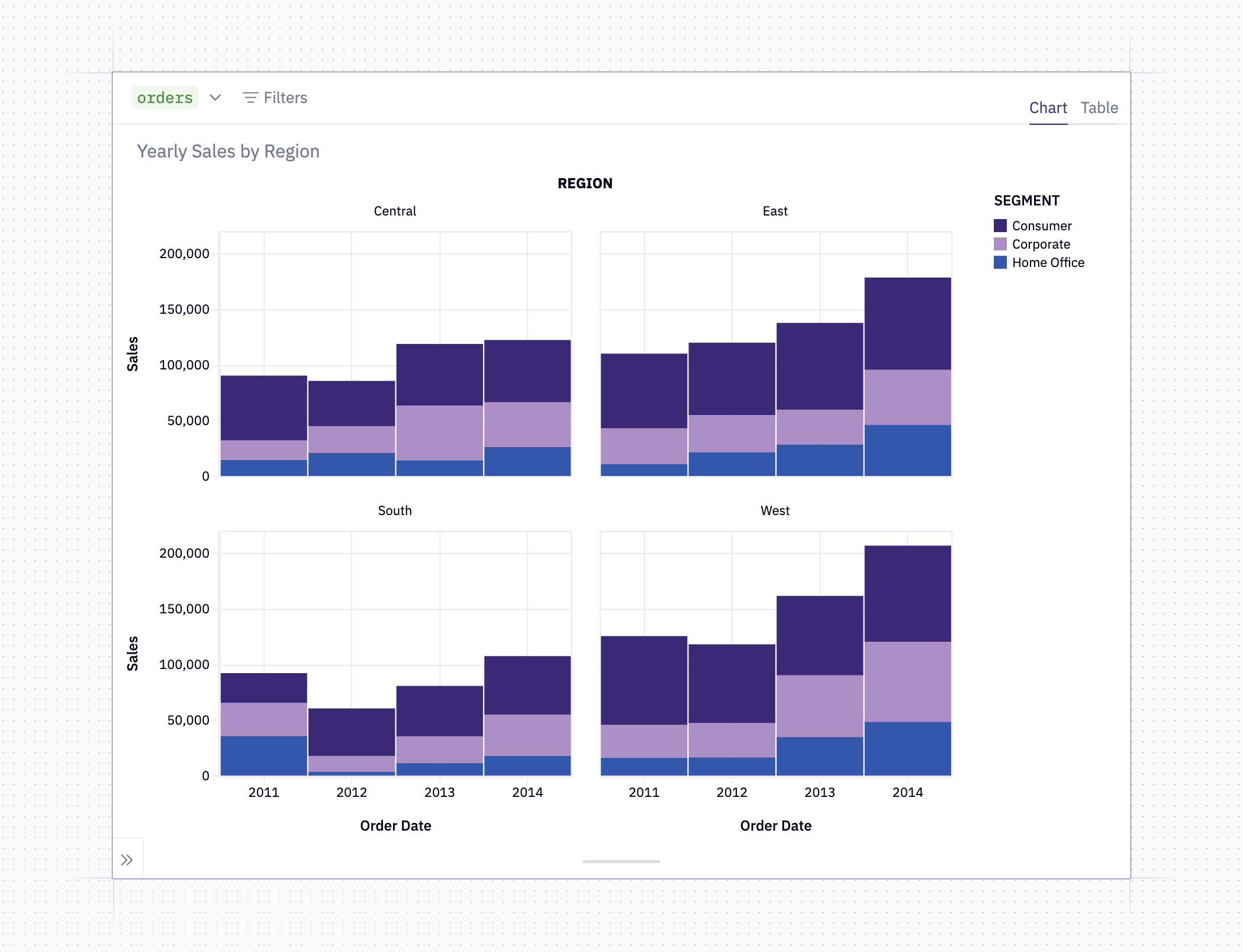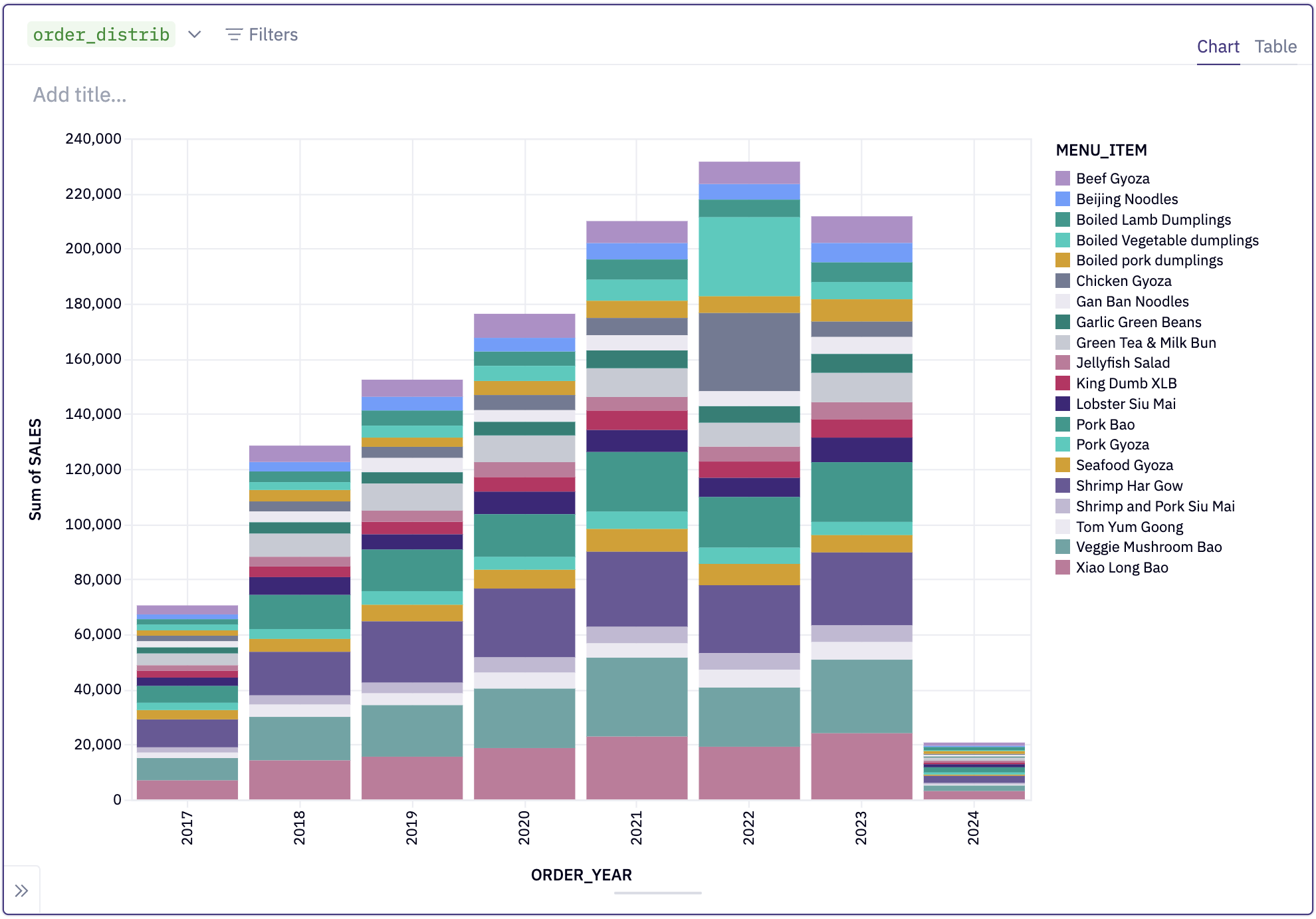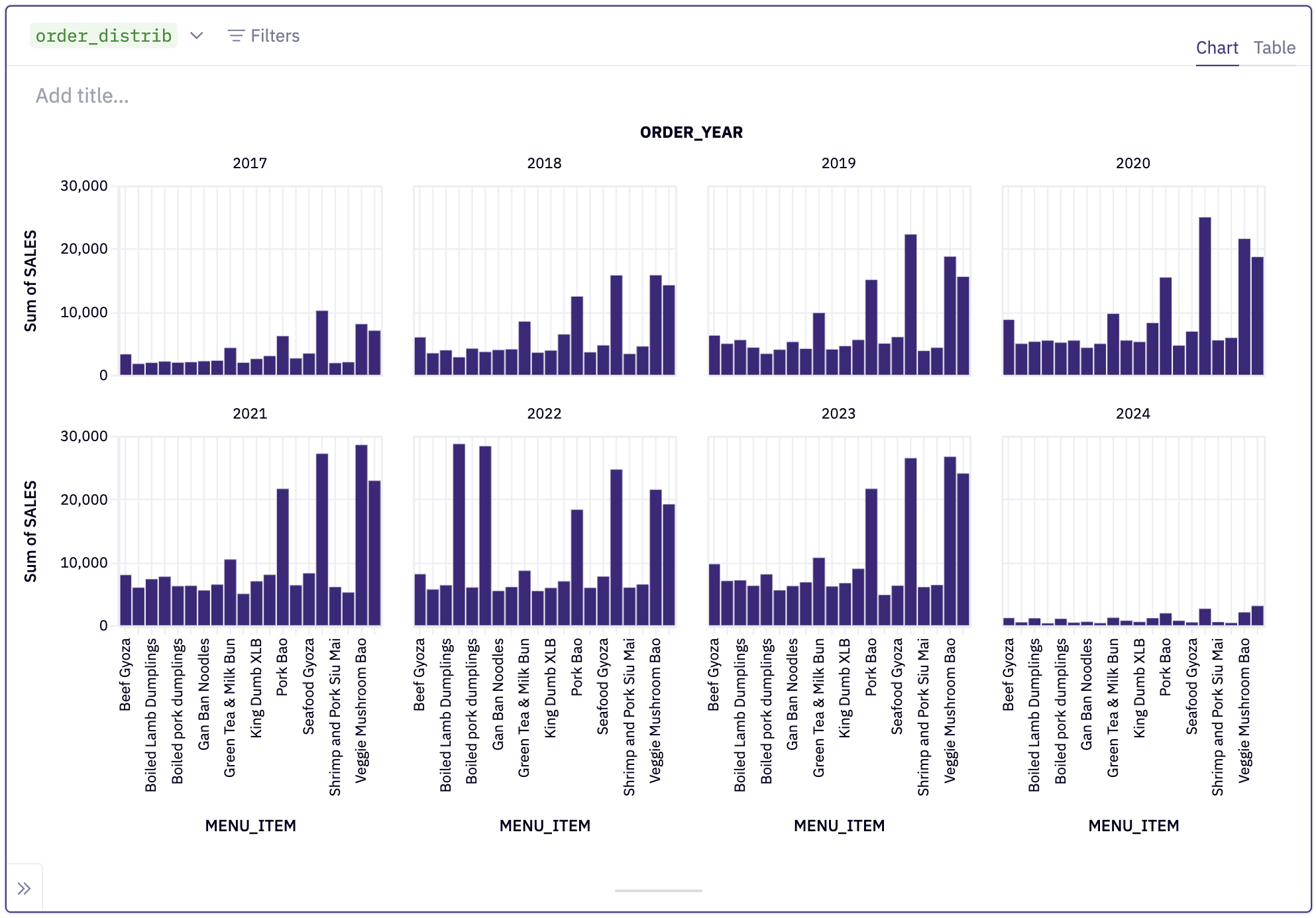Today, we're taking the powerful data tools we've built for technical practitioners, and opening them up to everyone!
We're releasing end-to-end no-code workflows with spreadsheet-style calculations, data browsing, and updated governance features.
These new workflows live right alongside our existing SQL, Python, and AI tools, so everyone— regardless of technical experience— can come together in Hex to ask and answer questions with data.
🧮 No-code Data Browser
Our new no-code Data Browser makes it easy for anyone at your company to search for and preview data.
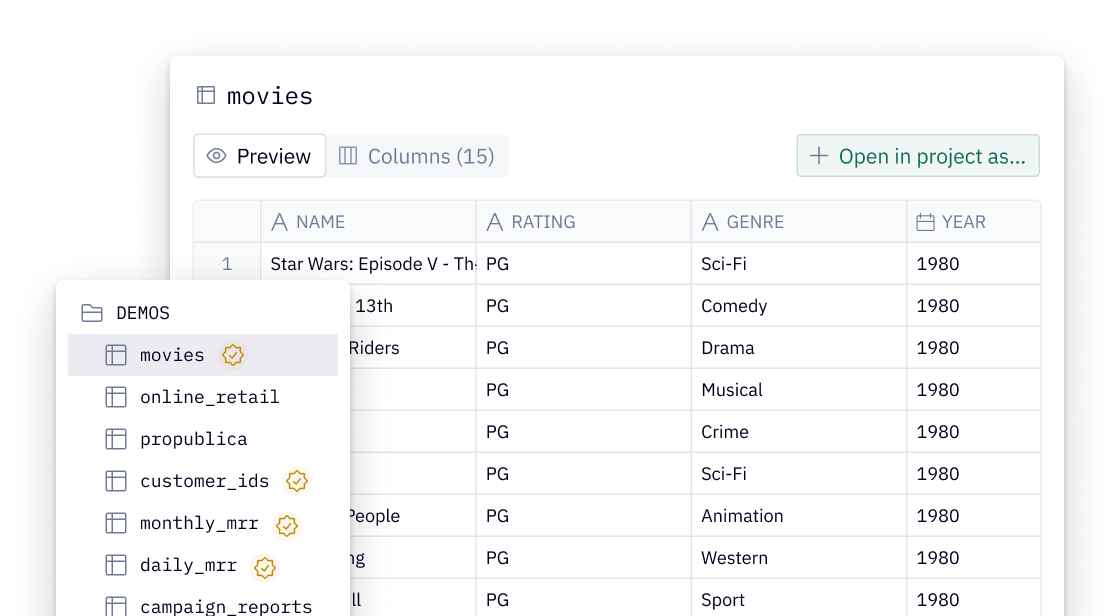
You can search for tables, columns, or descriptions, and then see previews and additional metadata – including some imported from your warehouse or dbt Docs.
Then when you find a table you want to work with, no-code cells can now load data directly from underlying databases, without an intermediate SQL query. Just point at a table, and go. All the bells and whistles work in this context too too, from column formatting to totals and filters.
∑ Calculations
Hex speaks spreadsheet! We’re adding support for the world’s most popular data language, and introducing spreadsheet-style formulas, right in Hex.
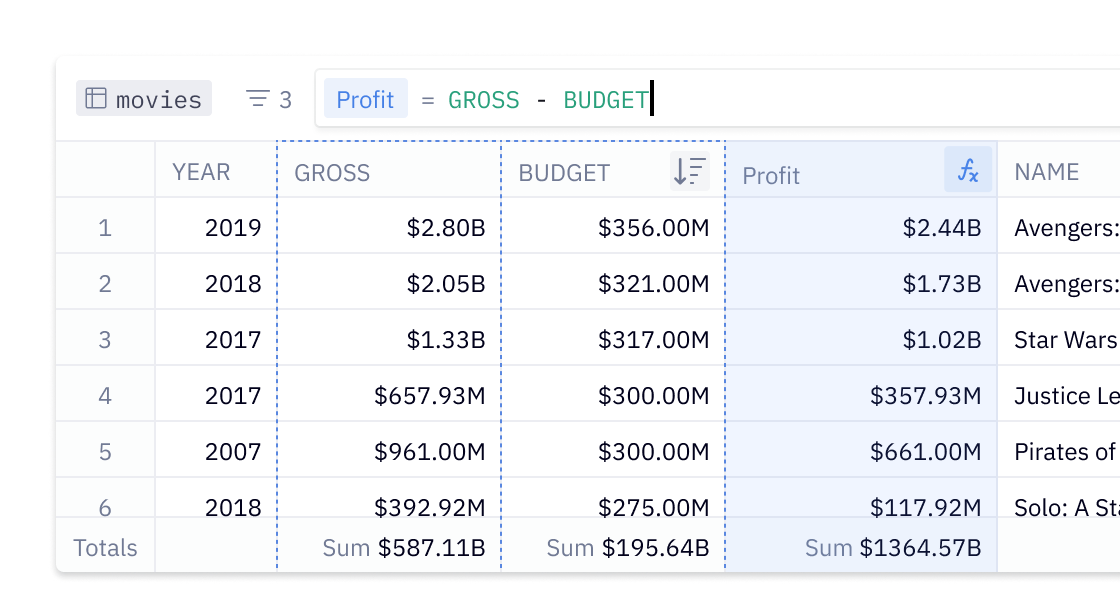
Spreadsheet calcs are available almost anywhere you see a table. Just click the + and boom – you’re back in banking! As of today Hex supports over 60 of the most common spreadsheet functions, with more (including aggregate functions and input parameters!) coming soon.
When you execute a calc, Hex’s compute engine compiles it to dialect-specific SQL, and pushes it down to the full scale of the underlying data. But to make everything feel snappy, Hex runs fast previews, which run on a sample of the data in your browser:
🔏 Endorsed Statuses
Endorsed statuses provide a visual indication of which projects and data are trusted, governed, and canonical.
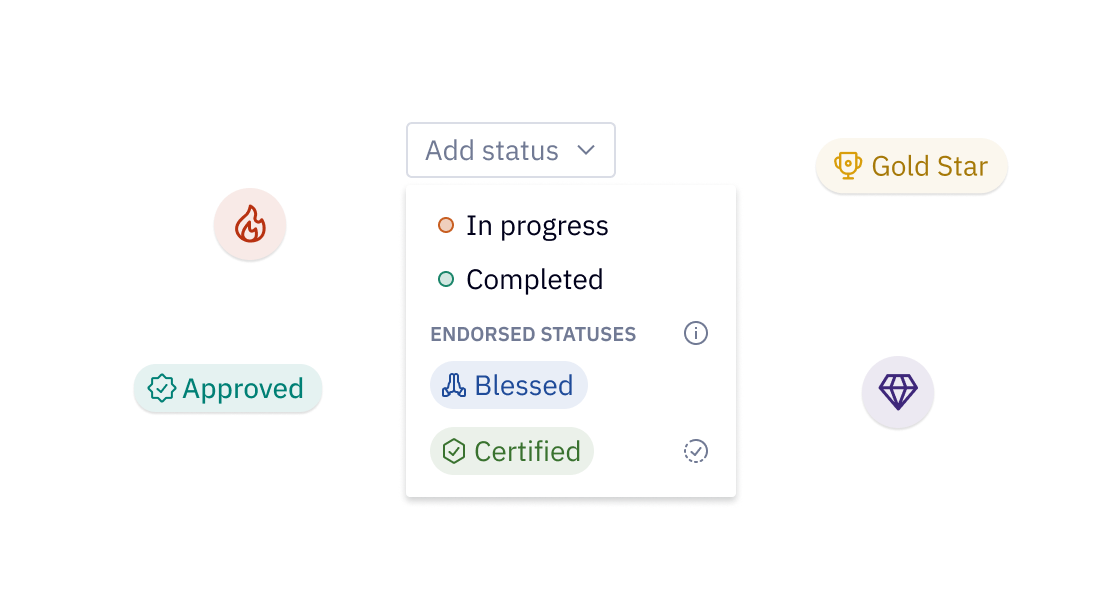
Only Admins and Workspace Managers can add an Endorsed Status to a project, providing a layer of trust and governance around your workspace.
They’re also fully customizable, so you can add whatever name, color, and icon best suits your workflow.
Endorsements work great with our new Reviews feature, too: you can set a given status to require a review, so you can be sure you always get an second set of eyes on changes to important projects.
Learn more in the docs.
🔮 Faster, more functional Magic AI tools
We’ve made a ton of improvements to our AI tools to make them faster and more accurate.
We're releasing:
10x speed improvements for Magic Charts! We changed how we do prompting and parsing for text-to-viz so they generate much faster.
Diff-based editing for Python: now instead of waiting for the whole thing to stream back, we just get the diff back. Much faster!
And an overall ~2x speed boost with the latest GPT4o model.
A note about bringing everyone together with data
People don't talk as much about the "Modern Data Stack" anymore, but it's amazing to stop and think about how much it revolutionized the backend infrastructure of data analytics, making fancy software engineering best practices and powerful tools accessible to everyone.
The next thought I always have is just how fragmented, messy, and scrappy the frontend of data analytics still is. SO many things are way harder than they need to be!
At Hex, we believe that there's a better future just around the corner in the form of multi-modal workspaces like Hex— unified platforms that let you work seamlessly between code, no-code, and natural language prompts to build with data alongside anyone from your company.
With today's updates (and everything else on the horizon 😉) we're building towards that future as fast as we can.
And if you made it this far... what are you waiting for! Go write some calcs, browse for some data, and consume some delicious, trusted, certified projects. mmmm, certified projects.
